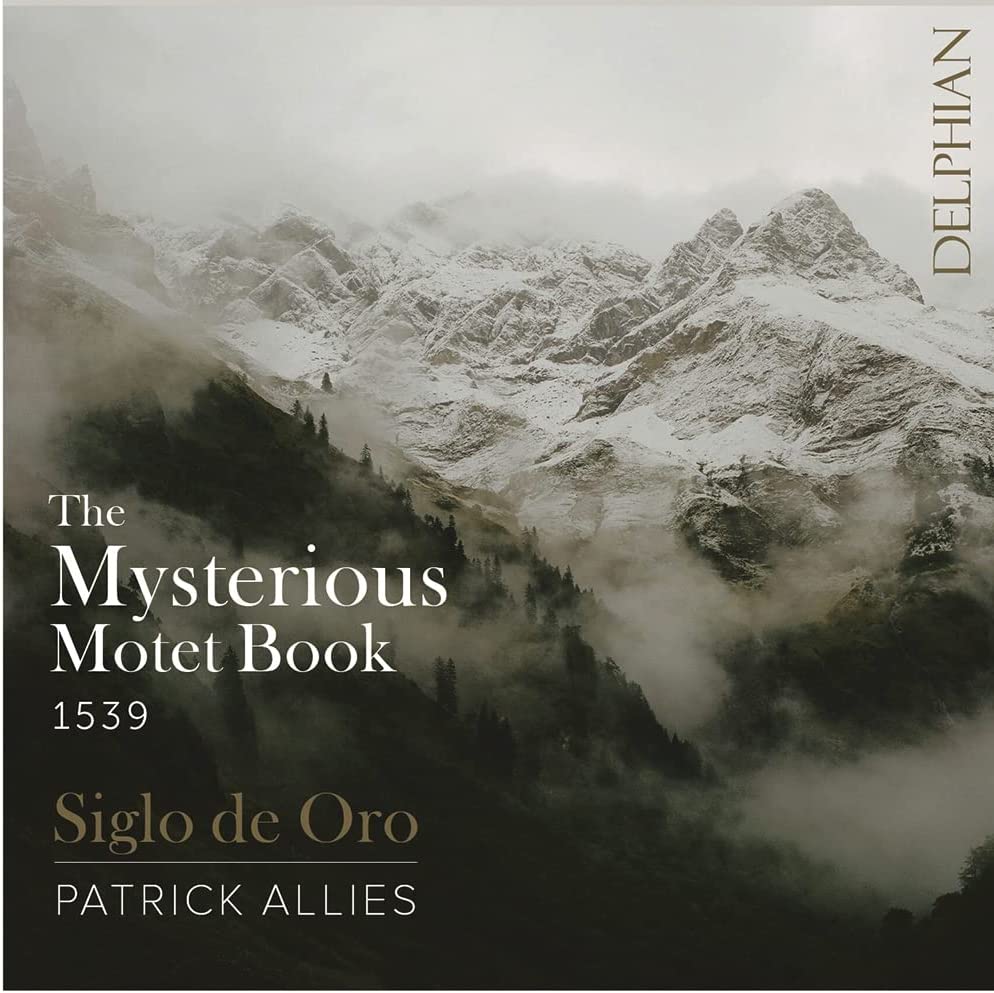Siglo de Oro, Patrick Allies
67:14
Delphian DCD34284
For once the word “mysterious” used in a title is not an exaggeration or a misrepresentation. The provenance of this publication really is, and remains, a complete mystery. But first, what of the musical contents, 28 Latin motets of which twelve have been chosen for this recording? There is absolutely no mystery about the quality which, on the basis of this selection, is respectable and, in a few cases, high. Indeed, although the programme concludes with a work by Gombert and another which is attributed to him in this source but to others elsewhere – of which more below – it is pieces by lesser-known composers, or composers known better in other genres, which are the most striking. The disc opens with Salus populi ego sum, a work of seamless beauty punctuated by some delightful dissonances, composed by Pierre Cadeac. There is a fine animated setting of Haec dies by Johannes Sarton, with memorable “noe noe” refrains concluding both sections, while Postquam impleti sunt by Jhan du Bilon, after a rather bland beginning, develops with some wonderfully undulating phrases and intensifying harmonies, before releasing the tension for a satisfying close. Of the composers better known, Arcadelt’s Dum complerentur might be thought to contain more dissonances than would be expected in this context, for instance in the Alleluia, while a breath of madrigalian ethos occurs near the end at “ubi erant sedentes”. Willaert’s two items, Laetere sancta mater and Peccavi super numerum seem in these performances to be interesting rather than striking, the latter somewhat soporific beside the anguished setting by Byrd, and the disc concludes with two pieces by Gombert. Veni electa mea may not be by him, and Jacquet of Mantua receives equal billing as composer in the lists of contents, but although the relevant passage in the otherwise very informative booklet draws attention to the existence of attributions other than to Gombert, these – including Jacquet – are not explained in any further detail. The DIAMM website notes an attribution not only to Jacquet but also one to Jacques Berchem. There are settings of the similar text Veni dilecta mea by Gombert and of Veni dilecte mi by Jacquet, and the thought occurs that since identical or similar titles are a significant cause of misattributions during this period, perhaps this piece is the work of Berchem, who does not seem to have set such a text. Or, as the saying goes, not as the case may be. Judging by this performance, the work does not seem to shout that it is by either of the named composers. Nor is Laus Deo one of Gombert’s most distinguished works, always bearing in mind that even a modest work by Gombert is equal to the best works of many other composers. Perhaps in this instance the silvery sound of Siglo de Oro is less suited to the more bronze sound-world of Gombert’s music.
It remains to mention the two finest pieces on the disc. Apparens Christi is a wonderfully sustained work of over eight minutes’ duration, composed by Johannes Lupi. He shares a disc with Lupus Hellinck (Hyperion CDA68304) which I praised warmly in EMR (review published 1 February 2020) and this work confirms his status as an outstanding contributor to the Franco-Flemish repertory. Best of all on the current recording is Exsurge quare obdormis by Dominique Phinot. (There is a disc devoted to his music on Hyperion CDA67696 sung by The Brabant Ensemble.) Unlike Peccavi mentioned above, this setting really is fit to be mentioned in the same sentence as the sprightly setting by Byrd. Its luminous SAAAT scoring and minor mode, delivered with impressive momentum by Siglo de Oro, give it a hypnotic plangency, and Phinot’s sure-footed variations of texture beside his immaculate insertions of occasional striking passages of homophony within the prevailing polyphony make this motet irresistible. It is no surprise that in his booklet notes to the recording mentioned above, Roger Jacob – who is largely responsible for the modern revival of Phinot’s music – observes that “the theorist Hermann Finck in 1556 placed Phinot behind only Gombert, Clemens, and Crecquillon (and ahead of Willaert) in a list of composers he described as ‘foremost, most excellent, subtlest and, in my judgement, to be imitated’.” The evidence provided by the current recording bears this out.
The mystery in the title remains. Why was this book of blatantly Catholic music published in a blatantly Protestant city? (Significantly the motet by Phinot lauded above is one of three in the publication for which there are no known surviving manuscript sources.) Daniel Trocme-Latter offers some useful background in the accompanying booklet. Furthermore, there is certainly no comparison with the circumstances under which Byrd published either his Masses or his subsequent Gradualia in Protestant London. As the Philip Henslowe character repeats throughout Shakespeare in Love, “It’s a mystery”, and like the one in the film, this mystery looks set to remain.
Richard Turbet
